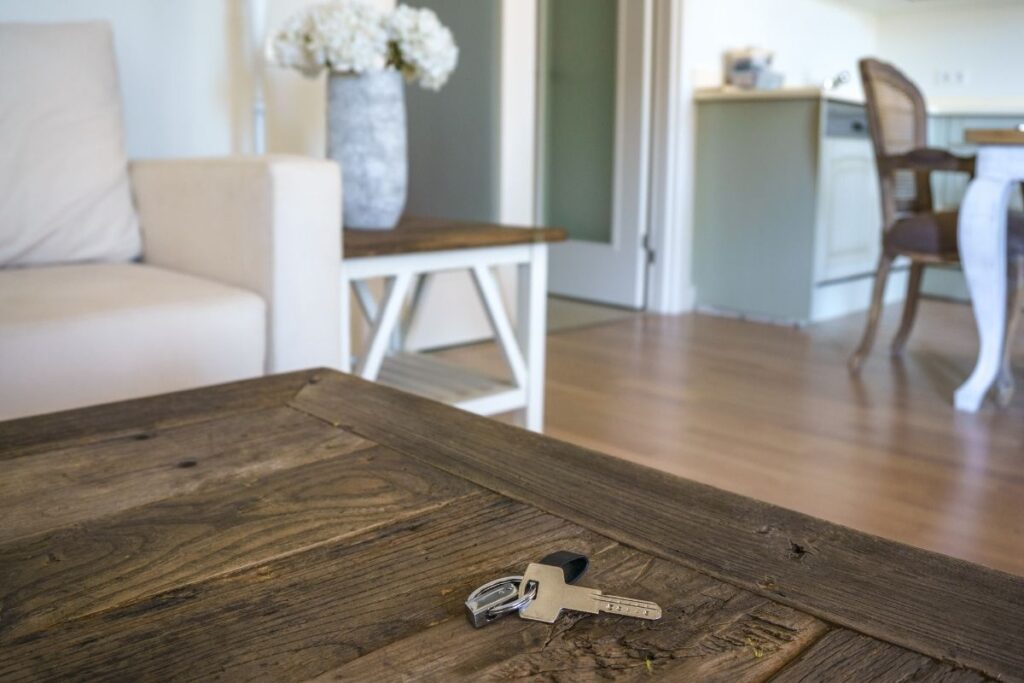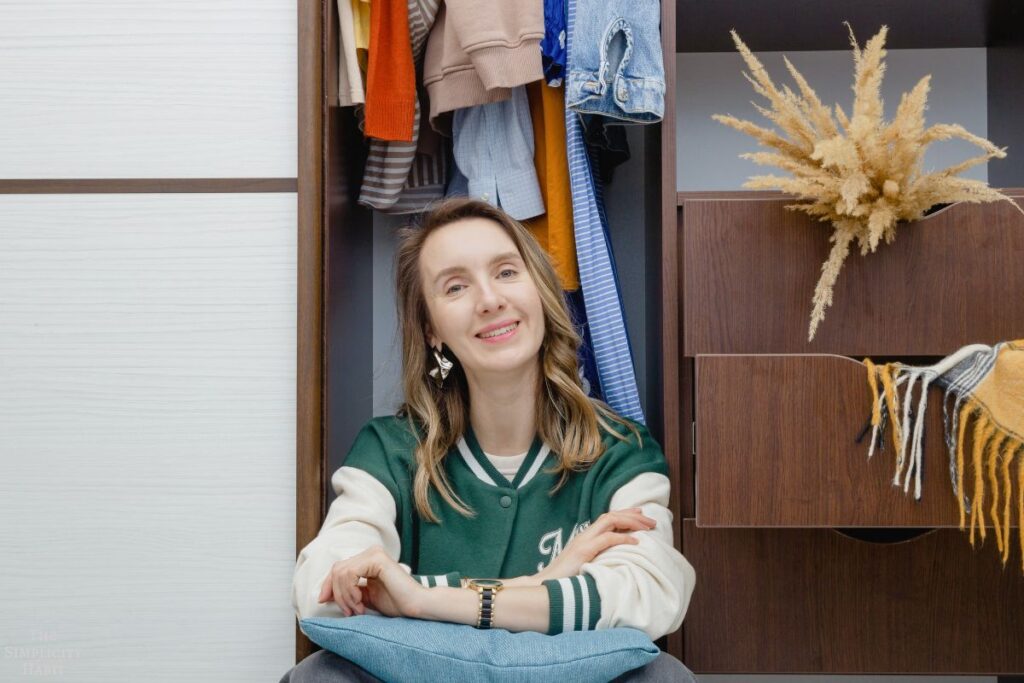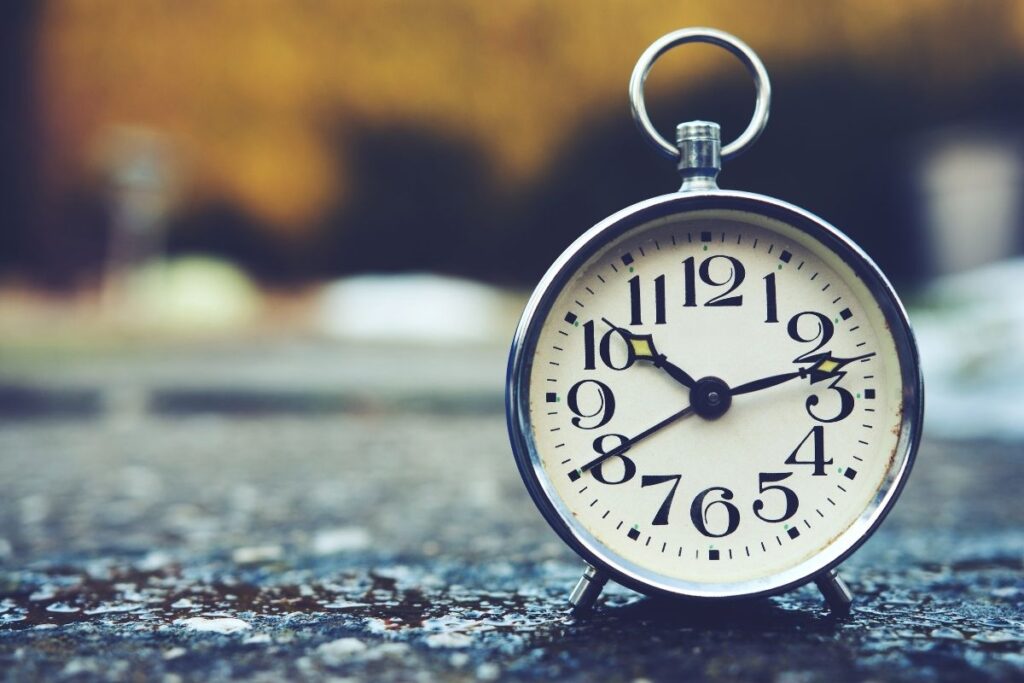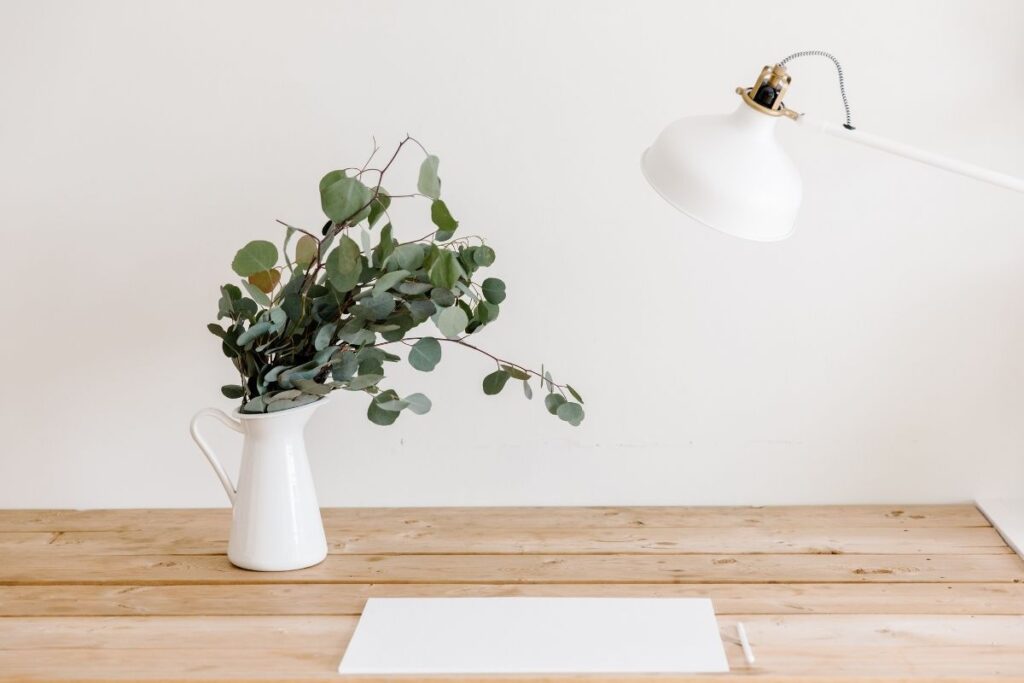Inside: If you’ve tried to declutter before but didn’t make the progress you wanted, try some of these ways to declutter when nothing else works.
A guest post by Rose Morrison
Decluttering your home is hard work. Perhaps you’ve tried different methods before and couldn’t stick with them for one reason or another.
When this happens, many of us try new strategies or mind tricks that might help us clean up the mess but don’t cut to the heart of the issue.
It feels defeating when you want to reach a goal, but are having trouble getting there. If you’re stuck in the decluttering process, try one of these ways to declutter when nothing else works.
Every person has their own system that works for them. Perhaps one of these will be the key to making the decluttering progress you’ve been dreaming of.
5 Ways to Declutter When Nothing Else Works
If you’ve tried various decluttering methods and been frustrated that they weren’t working for you, there’s hope! These five ways to declutter when nothing else works may be just the jumpstart you need to make serious decluttering progress.

1. The One-Touch Rule
The one-touch rule is the most straightforward method to implement on this list. As the name suggests, simply reorganize your things so that they only have one touchpoint (desk, floor, shelf, etc.)
Touching is appropriate for items like books and folders, but other miscellaneous objects should have their own designated spots.
You’ll find this method especially useful in high-traffic areas around the house, including your workspace, the bathroom, the mudroom, and bedrooms. These areas tend to gather a lot of unnecessary small-item clutter in a short amount of time.
Instead of throwing your stuff into a pile, you might put out multiple catch-all bowls or install hooks for each individual item.
Your touchpoints should optimize your tasks around the house. For example, the desk in the image above is an idealist’s version of one-touch, but it might impede your workflow by taking up too much desk space.
Instead, utilize bins, racks, filing cabinets, and other organizational tools to free up space while still following the one-touch rule.
The one-touch rule is a great decluttering habit that will keep items from piling up in various places in your home.

2. The KonMari Method
This organization method, popularized by Marie Kondo, has a specific process – but that makes it all the more effective. You might have heard the phrase “this sparks joy” before, and that phrase sits at the heart of the KonMari method.
It all boils down to whether or not an object brings you joy. If the object makes you happy, keep it. If not, you should have no issue discarding it.
Joy can mean many things in this case. For example, a phone charger might not make you jump for joy, but you need it to power your cell phone – therefore, its function makes you happy.
It’s largely subjective, and you will get a better feel for it as you go through each step. You want to sort through your belongings in this exact order:
- Clothes
- Books
- Paper
- Komono (miscellaneous items)
- Sentimental items
Going from big to small prevents the method from getting too overwhelming and ensures you don’t create a mess in the process. Sorting through your wardrobe will probably be the most difficult step, as the KonMari method recommends specific folding techniques to reorganize the clothes you keep.
This method only works if you’re honest about each object. You can’t let your personal biases or past experiences affect your decision. If something doesn’t bring you joy now, it’s probably not worth having anymore.
Put all of the non-joyous items into storage, donate them, or throw them away. You’ll be surprised how easy it is to let go of things once you accept that they no longer have a worthwhile purpose.
If you’ve already tried Kondo’s method and didn’t find any magic in tidying up her way, no worries. There are more ways to declutter when nothing else works.

3. Swedish Death Cleaning
Don’t let the morbid name give you a negative impression. Swedish Death Cleaning is a decluttering method first coined by Margareta Magnusson in her self-help book called, “The Gentle Art of Swedish Death Cleaning.”
In a nutshell, you remove all items that you wouldn’t want your family to deal with in the event of your death.
We don’t like to think about it, but our families will have to sort through the belongings that remain in our homes when the time comes. You can save them some trouble by simplifying the task for them.
While this reason is certainly powerful enough to motivate you to try the Swedish Death Cleaning Method, you should primarily do it for yourself.
This method forces you to address the clutter in your home with a very straightforward (and some may say harsh) approach, unlike the other strategies on this list. It gives you a rude awakening and a new perspective on what items you do (and don’t) need.
As effective as this method might be, it’s not for the faint of heart or those with sentimental personalities. It’s also probably not a good idea if you had a recent death in the family.
Don’t dive in headfirst, or you might get overwhelmed and give up before you make any significant progress. You need to mentally prepare yourself and ease your way into the technique so that you’re ready to ruthlessly declutter your stuff.

4. The Pomodoro Technique
Pomodoro means “tomato” in Italian, which seems like a random name for an organizational technique. However, the name actually refers to the tomato-shaped timer that many people have in their kitchens.
This timer represents the main idea behind the Pomodoro technique, which was first introduced by Francesco Cirillo in the 1980s.
The structure for this technique is simple enough on paper. You work on a task for 25 minutes, followed by a five-minute period of rest.
This Pomodoro block of time establishes a structure and helps you stay focused. After four blocks, or pomodori, you take an extended break to regroup and reenergize.
In the context of decluttering, the Pomodoro technique helps you pace yourself and avoid getting overwhelmed by the number of items you need to sort through. You can also assign 25-minute blocks to specific tasks and check them off as you complete them.
You’ll feel more satisfied after finishing each job and build momentum as you go.
The 25-minute period presents a healthy challenge, while the five-minute rest forces you to step back and recollect yourself. A balanced workflow leads to better mental function and thus better performance.
Not sure what areas to start with? Try these easy high-impact areas that you can declutter quickly.

5. The Minimalist Game
When all other methods fail, turn your decluttering process into a game. Minimalist content creators Joshua Fields Milburn and Ryan Nicodemus created the Minimalist Game to simplify home cleaning projects.
The concept is straightforward: The number of items you throw away corresponds with the day of the month.
Throw something away on the first day, then two items the next day, and so on. There are no requirements for the types of goods you can throw away. Everything is fair game.
The process becomes more challenging, but each day will make more clutter disappear than the last. By the end of a 31-day month, you will have removed 496 needless objects.
You can play for as many months as you feel necessary. This method requires a greater long-term commitment than others, but that’s the beauty of the game.
You will grow confident with your decision-making and feel more comfortable letting things go as the days pass.
If a month feels too long for you, create your own 7-day decluttering challenge in your home!
What ways to declutter have worked best for you? Share it in the comments!
I hope that at least one of these ways to declutter when nothing else works is a match for you and helps you to reach your decluttering goals!
Sign up on the form below to get weekly decluttering tips and inspiration sent straight to your inbox. You’ll also get the free 5 Areas to Declutter in 10 Minutes Checklist to help you get started decluttering today.



I use my mother’s 12 months rule- not just for clothes but everything. If I haven’t worn it or used it like a kitchen pan, or anything, it goes to a charity. You might think you’ll use it one day but 12 months is a year!
I tried everything, but I never had enough time to really declutter. I finally hit upon a method that worked. I put 3 boxes in the hallway…One labeled Trash, one labeled Donate, one labeled Sell. As I came across things in closets, cupbords or shelves that I simply didnt need, use or want, I placed it in one of the boxes. When a box got full, I handled it…toss, donate or sell (mostly on FB.) I did the same in my garage. It easily fit into my life, and after 18 months, I had removed 2/3 of my “stuff.” It was free-ing and a great release of tension.
My Mom was a hoarder and had a house, apartment and a storage unit that I had to clean out.
I came up with The Clock Method.
I started in one corner of a room and worked my way clockwise. I made quick decisions of what to keep, donate, trash and if I couldn’t decide I left it and move on. Once did a full go-round I went around again and again until the room was empty.
I like the packing party, you completly empty your home, box all your belongings, label and itemize each box, store the boxes in the garage or an empty room. Then, you remove from the boxes only the items that you are actually USING. After several weeks, or months (you choose your goal) you donate the boxes of unused items to charity.
My method to declutter, pretend I am going to move overseas. Ask yourself, “Is it really worth paying shipping and moving charges on said item?” If not, item is tossed or donated.
I hate clutter and I am right there with you on decluttering. However, when you said to throw away the number of things on the number of day it is all I could think of was where will all these things go? Our landfills are full. Yes, give to charities. But throw away so much then add that to millions of people? Yikes! I think we all need burn barrels! Hahaha
I have bought and sold houses 14 times, my decluttering technique is have your house photo and show ready at all times. I could list my house today and be ready for pictures. Counters clear, closets organized. Everything in its place
You might not have had to start with lots of clutter…
I agree with you on not letting clutter build up after you have it cleared and keeping your house ready to show all day every day though!!
Love your comment! I haven’t moved a lot but that has been my method also. Cleared kitchen and bathroom counters and organized closets always. I vacuumed and dusted every morning. Cleaned the bathroom. Sprayed windex and wiped down kitchen appliances every morning. It really does not take that much time if you can do it every morning. I did it for me because I enjoyed it and had the rest of the day to go out or do something fun with my Mom. I had very little extra stuff. The kids didn’t have a lot of toys. During the summer, the kids and I went to the pool at a state park nearby most afternoons. My neighbor and I had a yard sale every May and every September to sell mostly outgrown kids clothes but also other things too. I think when shopping is not entertainment it is easier. Part of the success of keeping the house nice, is finding a fun activity that satisfies and having friends to share life with. Also if given the task of cleaning out another person’s home; don’t bring any of it home with you. If they are deceased, they are finished with it. Donate and sell it.
Until recently I had always been buying little things (usually online). Even things that I assumed I would need in order to properly declutter and organize.
I have a tendency to put stuff off and so I would just pile new stuff over older stuff and usually it would end up in a basket or bag.
I started to notice that I wasn’t able to find anything I needed when I was ready to actually use it, so I would tend to repurchase quite a few items in a pinch. All the while gathering more and more things.
From time to time I would go through a few baskets, bins and bags and do my best to “organize and sort or give away” all of the stuff and I thought at time I did a good job.
Unfortunately I was actually just moving clutter from one area of my home to another. Things would get out of hand every so often. Space would become sparse and then all of the…stuff was something that I spent a lot of time worrying about. So it was stressful.
So I decided to pack everything in my room up leaving behind only a weeks worth of clothes, toiletries, a phone charger – stuff like that. Just the things that I use daily.
I used adjacent rooms as a sorting area, but that was much later.
Without all of the stuff crowding around I realized it felt cleaner, looked bigger and I really liked that feeling.
I didn’t just throw everything else away but kept it in a separate room and for about the next two weeks I periodically needed things that I had put in that designated area and I returned those items back to my room.
I then started on my kitchen. I installed drawer dividers and I put lazy susans in cabinets. I chucked a bunch of my mom’s old herbs from the 80’s and anything bulky that was brought to be used for stuff like…making waffles or rice.
Gadgets that never lived up to the hype were out as well.
I organized thinking about ease of reach and making sure I could see pantry type items without having to move everything around. Those special items I use, but only a few times a year went on the highest shelves.
I next removed everything from my hall closets. Cleaning supplies too many to count, light bulbs, 40 year old hot water bottles, empty old boxes or “trash.”
I probably trashed about 70 percent of the items due to their age and whether it’d been used in the past 5 years or so. Moving everything left to the room being used as my sorting space.
Now, my closets being basically empty and seeing everything that was left I was able to get a clear picture of both what I had and what I actually needed.
I used wicker baskets so I could see whats in my upper sheves by just pulling them out and around that time I found that I had stopped spending very much at all, especially from Amazon….
Anything that was left over in the sorting room was either deemed unnecessary and donated or removed and stored in it’s own designated location where it can be organized, visible and thus easily used.
I am so much happier now. My house feels clean and airy for the first time.
I also spend a lot less money on stuff. Man, the amount of unnecessary specialty cleaning products I had amassed would have impressed Imelda Marcos as far as collections go…
And it’s really nice to know that I can find things I need when I need them. It’s also easy to see what I am about to run out of and so I don’t have to run out to the store for batteries or baking soda.
I have just joined this DE- cluttering game, it is going to be slow & long but hope I will get there eventually.The reason being is for to have an easier,simpler life as I am ageing. I need to find cash for aids such as stair hand rails, stair chair lift, walk in shower etc.Or may be for funds, space & time to have to downsize property.
Need your email suggestions. Thanks for helping me.
After having to clear out items 3 different times which were left by deceased family members who grew up during the depression, (They never threw away anything they might possibly need someday), I came to realize that I didn’t want to leave this chore to my own kids. I’m in mid 60′ s. I might have 10-15 years left. Once you get to the last 20 years of life, it’s time to get rid of ‘stuff’. Your kids won’t want it. Why burden them with all of the things you’ve kept over the years? I ask them if they might want it. If they dont, then it’s gone. I am becoming a minimalist and it feels refreshing. Easier to keep clean, easier to find things and I feel more relaxed and much happier.
I need the happy guy in the picture to help me!
Me too! Lessen the burden for my kids and enjoy my space! I have helped clean out 3 deceased family members homes. I didn’t bring much home with me except pictures.
My method works and can be adjuncts to any if the other methods. I pack non-essential things in boxes. If, after a few months, I haven’t needed/wanted items, I donate the boxes without re-opening them. It is much less stressful putting an item in a box knowing that I can get it back than it is to totally get rid of it right away.
2019: Marie Kondo’s method. Ten station wagon loads to donations. Lived with my results until 2021
2021: Swedish Death Cleaning. Another ten carloads to donations. Lived with those results until 2023.
2023: Back to KonMari method. An unbelievable six pickup trucks full taken to donation. This will be the year that I learn to control my spending habits. In January, I did a low spend month. I was able to decrease my overall spending by 75% and I was able to increase my savings by 60%. I am doing another low spend month for February and, hopefully, I can at least maintain those same successes that I had in January.
I like your progress!
I have been focusing on the Swedish Death Cleaning method because I am dealing with clearing out my mom’s estate and am an End of Life facilitator – helping others plan and document their wishes and important information so those that are here know what to do. Interesting, I have offered workshops to aging well groups and have received a range of replies when it comes to decluttering and the Swedish Death Cleaning approach. One group, who said their focus for the year was decluttering, was adamant – NO DEATH TALK. Wow! Talk about ignoring the elephant in the room. It is important to declutter physical objects, yet, there isn’t much direction about decluttering your electronic presence – that is equally important and will only increase as we increase our use of technology. Thanks for the article.
“The Gentle Art of Swedish Death Cleaning” is the book and method that finally inspired me. I now look at my decluttering efforts as a future gift to my family and as a result am calm and objective in my decisions. I work in very small time chunks and actually make myself stop so I don’t become overwhelmed or overzealous. I did a moderate sweep a few years ago, and have begun again this past month, and it’s easier this time around. It’s not just removing items, it’s also making sure my will, final wishes, important documents, passwords, banking information is organized and together.
I love trying to be one a minimalist. It has transformed my life❣️
I’ve been on a “decluttering mission” for the last year! Started with bookshelves (several)….have donated to schools and library filling my car truck with each trip and there have been several! I have condensed our bookshelf library…and it works magnificently! What did the trick was asking myself how long I had to live to read all the books I had…laughing took me to the next century! Found success in focusing on this project which took about six months to complete! Next, focused on the linen closet….sheets, blankets, pillows, table cloths, napkins for all occasions and a few miscellaneous! This one was tough….but took everything out of our “large linen closet” and began to put back in just what I out of necessity would use…and if I missed something….knew I could replace it! The huge challenge was the kitchen. The only way to deal with this one was to empty out drawers, cupboards and start asking questions: used last? will use again? duplicates? what do I really use and need for 2 people….family dinners that include 10 at the table. Donated cookware, dining sets, tools, baking dishes, and lots more. Now have a really functional working kitchen I love! I could go on….but best principle to follow is to empty out what you are trying to clean; then be brutal about what you truly will need/use/love. Simplicity Habit info has been so helpful! Much thanks!
I’m so glad that the posts have been helpful for you, Betty. Congratulations on all of the progress you’ve made!
I enjoyed reading this guest post by Rose Morrison. I have been decluttering on a regular basis for decades, and I didn’t think I had any problems in this area. But I recently went through everything in our house again — while thinking more critically about what will be left for other people to deal with after I’m gone. And I am super pleased with the results!
P.S. The comments to this blog post are great! I always enjoy reading about other people’s experiences, but these are some of the best comments I’ve ever read.
I viewed some flats a few months ago thinking I might down size and live within walking distance to town so I wouldn’t have to drive so much. The thought of moving my belongings was overwhelming as I had so much stuff, particularly in the attic. In the past I had decluttered and labelled all my boxes so it gave me hope that I could do it again. The Simplicity Habit found me on facebook and has helped me so much. I found having several decluttering boxes around the house has been a wonderful tip because it takes the chaos and stress away. My staircase was always full but now it’s empty because everything that needs to go upstairs is in a basket. I feel excited and positive as I write because it was such a drain before. I had bags of paperwork in the dining room for 4 years and that has been moved up stairs! I’ve tidied my bedroom sorting drawer by drawer and feel so much lighter and enjoy being in there again. Initially, I did a lot of decluttering and some of it created extra mess so now I’m doing it more slowly and am seeing it as part of a process towards a greater goal. It’s been a great relief. Thank you so much Julianna!
I was never into declutterring until my son got gravely ill a few years ago. It made me understand what is important in life, and how much unnecessary stuff we buy that is worthless. As long as you have what to survive, and understand enjoying life is rather about the people in it and your experiences, then it changes your focus completely. I started asking myself with each item – do I really need this and went through a major declutter. My son recovered, and happy to say that I still have that thought process when I shop or decide on a purchase.
What do I say to someone who believes .”it’s not going to be my problem.”
OR
“Do you think I am going to die tomorrow.”